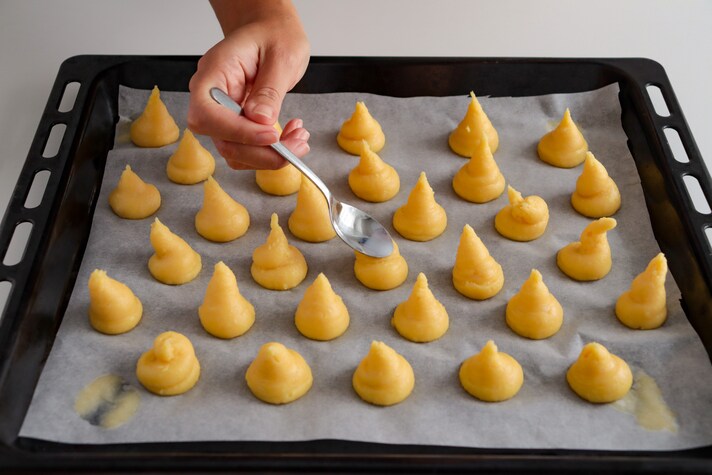How to Fix the 6 Most Common Baking Problems
We’ve all been there – eagerly waiting for our bake to come out perfect, only to find deflated pastries, lumpy mixtures, or overly spread cookies staring back. Baking may seem precise, but even the best of us stumble over common mishaps. Thankfully, these blunders are fixable with a few practical tips. Let’s troubleshoot the most common baking problems and ensure your next creation comes out flawless.

Baking is a mix of science and creativity, but sometimes things don’t go as planned. Pastries collapse, cakes crack, and dough refuses to rise, leaving even the most confident bakers scratching their heads. The good news is that most of these baking hiccups have simple fixes. Let’s take a look at the most common problems and how to solve them.
1. Choux Pastry Flattens

Choux pastry can be tricky. You pull it out of the oven, and it collapses faster than you can say “eclair”. This happens because the steam trapped inside hasn’t fully set the structure.
The Fix: Patience is key. Don’t take your choux pastry out of the oven immediately. Turn off the oven, leave the door slightly ajar, and let it cool gently for about 5-10 minutes. This helps maintain its light, airy shape.
2. The Cake Cracks

There’s nothing worse than slicing into a cake and finding an uneven, cracked top. It’s usually caused by too much baking powder or an oven that’s running too hot.
The Fix: Double-check your oven temperature with an oven thermometer to make sure it’s accurate. If the temperature’s too high, the cake sets quickly on the edges, forcing the centre to rise and crack. Also, measure your baking powder carefully – too much can cause rapid rising and cracking.
3. Cookies Spread Too Much

Perfectly round cookies sometimes turn into thin, greasy puddles. This happens when the dough is too warm or contains too much butter.
The Fix: Chill the dough before baking. A quick 30-minute rest in the fridge will firm up the butter and prevent the cookies from spreading too much. Bonus tip: line your baking tray with parchment paper rather than greasing it, as excess grease can exacerbate spreading.
4. Shortcrust Pastry Breaks Up

Crumbly shortcrust pastry can make anyone feel defeated. It’s often a sign that the dough is too dry or hasn’t had enough time to rest.
The Fix: Let the dough rest in the fridge for at least 20 minutes before rolling it out. This resting period relaxes the gluten, making the pastry easier to work with. If the dough still feels too dry, add a teaspoon of water at a time until it comes together.
5. Lumps in Chocolate

Melted chocolate should be smooth and glossy, but sometimes it seizes up and forms stubborn lumps. This is usually caused by moisture or overheating.
The Fix: Add a teaspoon of vegetable oil to the melted chocolate and stir gently. The oil smooths out the consistency and helps bring the chocolate back to life. To avoid lumps in the first place, melt the chocolate slowly over a bain-marie or in short bursts in the microwave, stirring frequently.
6. The Dough Didn’t Rise

If your dough looks like it hasn’t budged after proofing, it’s likely due to inactive yeast or an environment that’s too cold.
The Fix: Place the dough in a switched-off oven with a bowl of warm water. This creates a humid, slightly warm environment that encourages yeast activity. If the yeast is inactive, though, you’ll need to start over with fresh yeast.
;Resize,width=767;)

;Resize,width=712;)
;Resize,width=712;)
